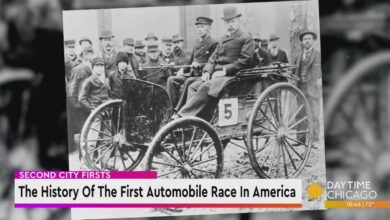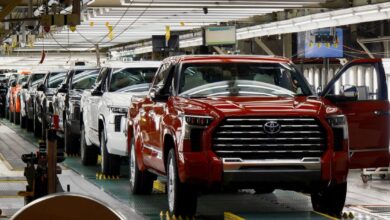Trucks, vans, and delivery sedans! The complicated landscape of New Jersey pedestrian PIP law and its impact on food delivery platforms

Shortly after the COVID-19 Pandemic began, general public spending on food delivery increased by roughly 70% between March 2019 and the first wave of the pandemic in March 2020.[1] As food delivery platforms have become more and more ubiquitous, questions continue to emerge about how these delivery platforms fit into the legal framework concerning motor vehicle use in New Jersey, which generally predates the inception of online food delivery platforms by decades. One such question concerns the responsibility to provide PIP benefits to pedestrians injured by drivers performing food deliveries on these platforms.
PIP Benefits and Pedestrians
By amendment to the No Fault Act that went into effect in 2003, pedestrians were removed from PIP coverage for any vehicle considered to be an “automobile.” Pedestrians must instead seek PIP benefits from their own personal policies, or from PLIGA if they are uninsured. “Motor vehicles” typically insured under commercial auto policies, however, are still required to maintain PIP coverage specifically for pedestrians. See N.J.S.A. 17:28-1.3. The distinction between an automobile and motor vehicle is therefore critical.
An automobile as defined in N.J.S.A. 39:6A-2 will typically be one of two kinds of vehicles:
- a private passenger automobile of a private passenger or station wagon type that is owned or hired and is neither used as a public or livery conveyance for passengers nor rented to others with a driver; and
- a motor vehicle with a pickup body, a delivery sedan, a van, or a panel truck or a camper type vehicle used for recreational purposes owned by an individual or by husband and wife who are residents of the same household, not customarily used in the occupation, profession or business of the insured other than farming or ranching.
With the exception of the specific uses set forth above, the automobile/motor vehicle distinction, when it comes to “private passenger” vehicles, centers primarily on the kind of vehicle at issue, rather than whether the vehicle itself was used for a personal or commercial purpose. Cases such as Wagner v. Transamerica Insurance Company support this proposition. 167 N.J. Super. 25 (App. Div. 1979). In Wagner, a car salesman was injured in an auto accident while taking a dealership’s vehicle to show to a potential customer. The Appellate Division made it clear that there is no basis under the statutory framework for distinguishing a vehicle based on whether it was intended for a commercial or personal use:
The vehicle involved in the present case was a private passenger automobile. It was neither used as a public or liveried conveyance for passengers nor was it rented to others with a driver. [It’s contended that] the Legislature really intended the No-Fault Law to apply only to vehicles used for personal and family purposes in contrast to vehicles used for commercial purposes. But such an intent is not evidenced from the language used in the statute.
[Id] at 30-32.
In New Jersey Mfrs. Ins. Co. v. Hardy, 178 N.J. 327 (2004), a police officer was injured when he was struck in the rear by another vehicle while on patrol in a police cruiser. The New Jersey Supreme Court held that:
The first clause of N.J.S.A. 39:6A–2a uses the . . . term “private passenger automobile” and includes two types of that classification: “private passenger” or “station wagon type” automobiles. The definition then exempts certain private-passenger-type and station-wagon-type automobiles based on their specific use: those that are used “as a public livery or conveyance for passengers” or “rented to others with a driver” are excepted from the definition. The second clause of the definition addresses the broader category of “motor vehicle[s].” It establishes that certain identified types of motor vehicles are considered automobiles for the purpose of the No Fault Act provided that they are not used for business purposes.
[Id]. at 334.
The Court went on to state that “[w]e find that the Legislature used the term ‘private passenger automobile’ as a term of art to distinguish such vehicles from ‘public’ passenger automobiles (such as taxicabs), and from private ‘freight’ automobiles (such as trucks).” Id.
Note on the Transportation Network Company Safety and Regulatory Act
In 2017 the New Jersey legislature passed the Transportation Network Company Safety and Regulatory Act, (“TNCSRA”), N.J.S.A. 39:5H-1, et seq. The TNCSRA requires that drivers of a Transportation Network Company (“TNC”) be provided PIP benefits. See N.J.S.A. 39:5H-10. The TNCSRA notably contemplates coverage for a TNC driver and does not make reference to pedestrian PIP benefits, which would seem to fall outside of the Act’s limited framework.
Presently, application of the TNCSRA is limited to drivers transporting passengers – food delivery drivers are not covered. See Malzberg v. Josey, 473 N.J. Super. 537, 549, 282 A.3d 1109, 1117 (App. Div. 2022). However, as noted by the Appellate Division in Malzberg,
[T]here is pending legislation that, if enacted, would do just that by supplementing the TNCSRA, establishing insurance coverage requirements for businesses that use a digital network to connect customers to a “delivery network company driver for the prearranged delivery of goods.”
Id. at 556.
This legislation is, in fact, currently pending before the New Jersey Assembly in the form of Bill No. 2793 and was referred to the Financial Institutions and Insurance Committee for review on January 9, 2024.
Conclusion
Significant case law exists attempting to clarify the motor vehicle/automobile distinction under the No Fault Act. As written, the commercial pedestrian PIP requirement excludes any vehicle of a “private passenger or station wagon type,” so long as that vehicle “is neither used as a public or livery conveyance for passengers.” As such, until the law is changed or definitions are amended, it would appear that commercial policies that cover what are construed to be private passenger vehicles, such as those customarily used by drivers performing deliveries on behalf of food delivery platforms, are not required to carry pedestrian PIP coverage.
[1] https://www.ncbi.nlm.nih.gov/pmc/articles/PMC9355939/#bib18



